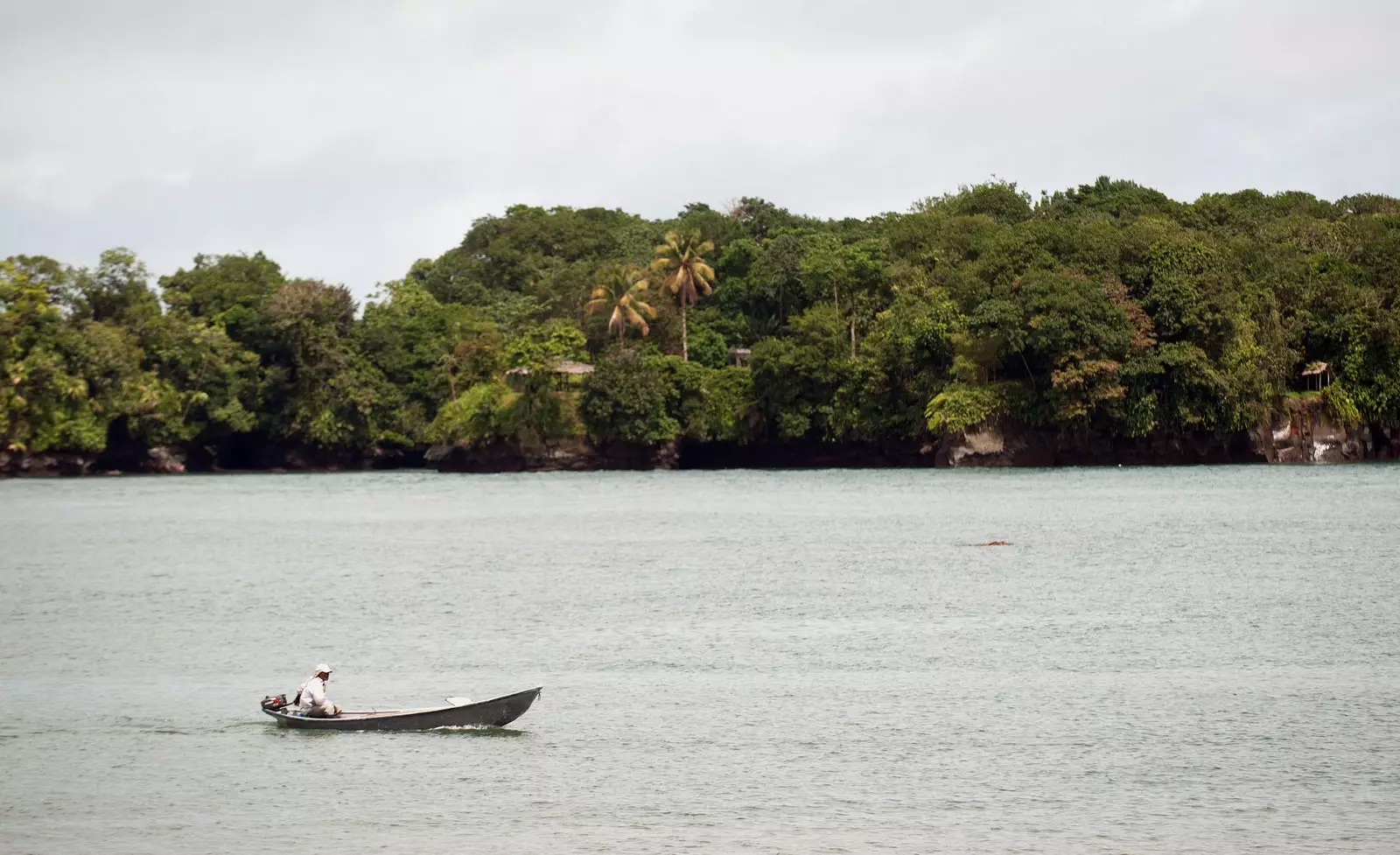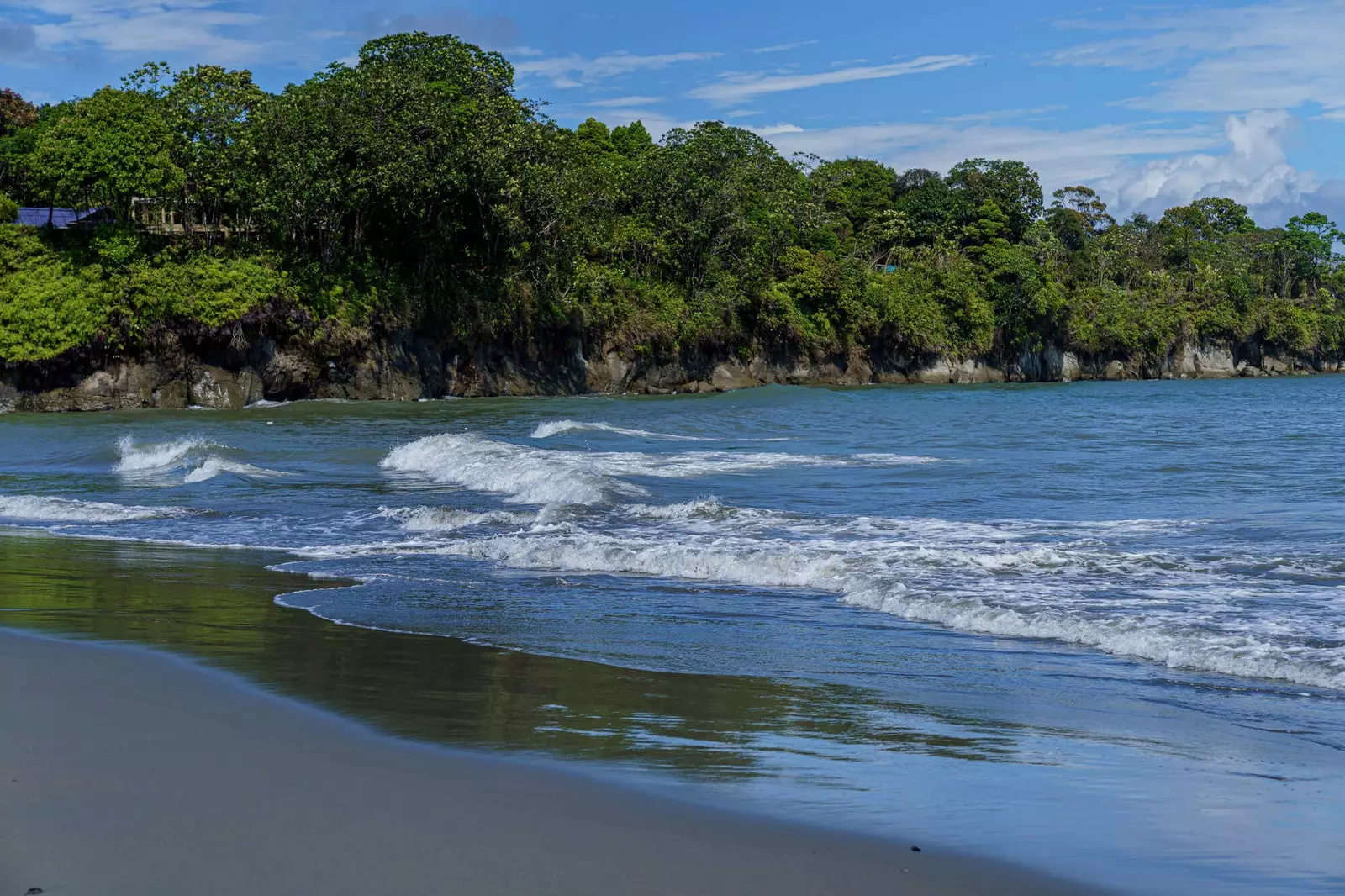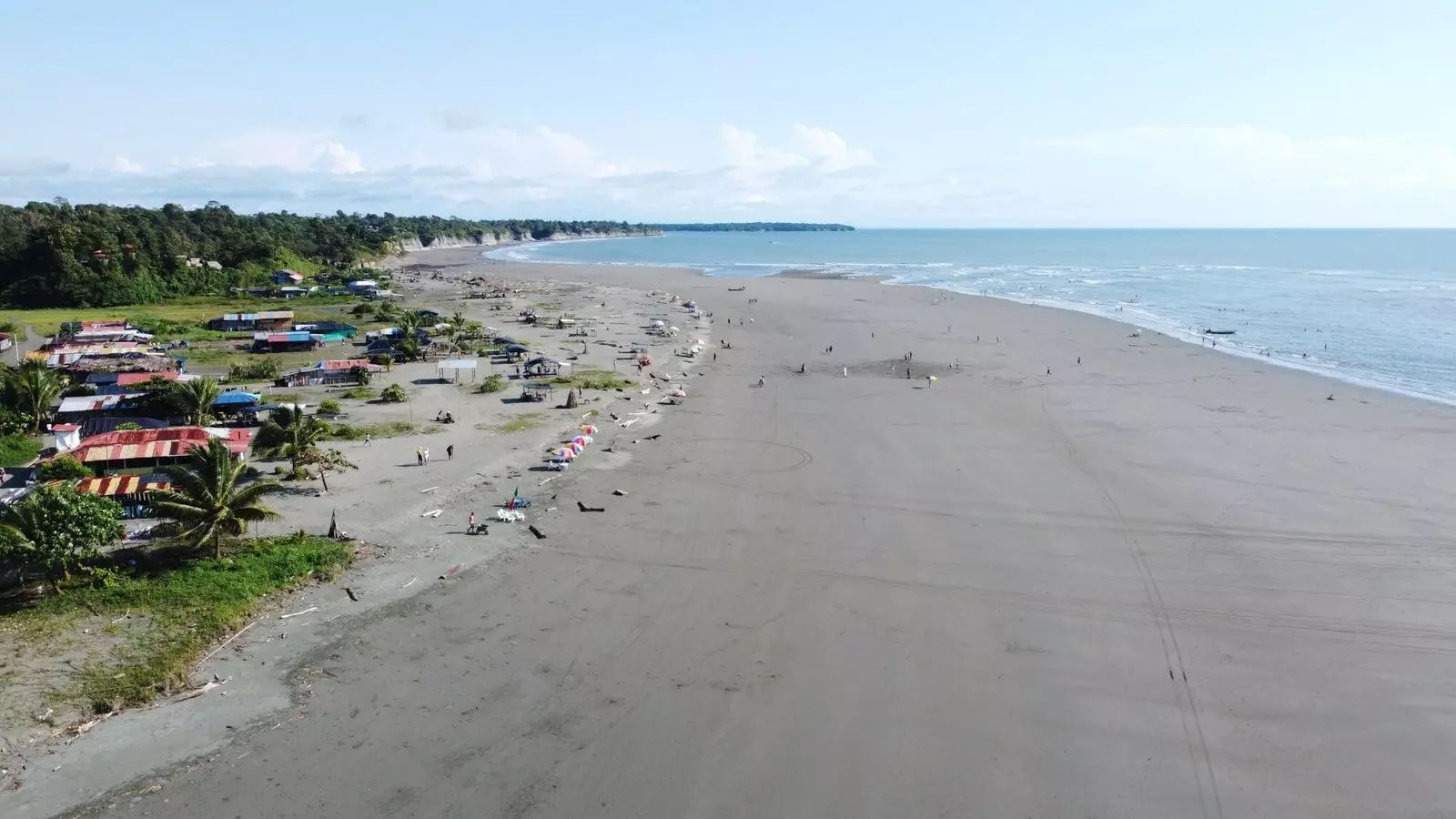To go to the beach in the southwest of Colombia , that is, to the beaches of the Colombian Pacific (Cali, Popayan, Coffee Axis), without taking planes or mortgaging your time on infinite buses, you have to go to the beaches of Bonaventure: the city with the largest port in Colombia and one of the largest in Latin America. Buenaventura is a poor city (with a millionaire port) and a majority black population, like the coast of all of Colombia.
From Cali to Buenaventura there are 112 kilometers and, a priori, they should be easily covered, but they are not: the bus takes three hours to arrive. Traffic jams, hills and potholed roads complicate the journey. Once in Buenaventura you must get to the pier to take the boat to Juanchaco.

A fisherman off the coast of Juanchaco in Uramba, Colombia.
These beaches can only be reached by boat, they are not an island, but they fulfill their function: they are surrounded by tropical jungle, and is one of the wettest areas of the planet. The vegetation overwhelms, as well as the bird songs and the screeching of insects.
Depending on your traveling skills, the boat will cost you, round trip, 80,000, 90,000 or 100,000 pesos Colombians (something between 20 and 25 euros). The crossing takes an hour and the journey is somewhat hectic, but nothing to worry about. The Uramba bay opens up, and the coasts recede.
to your left only ocean remains and the boat skirts the mangroves on the right side. Small towns with stilt houses, docks with children jumping into the sea, and mangroves, all mangroves: these twisted and submerged in the water are they part of the land going into the sea, or are they part of the sea going into the land?

Juanchaco, Colombia.
At the Juanchaco pier transportation to La Barra must be negotiated (the prettiest, quietest and most recommendable little town –and the beach– of the three): you can go by motorcycle, motorcar or tractor and, again, your expertise will determine the price: 12,000, 15,000, 20,000 pesos (between 3 and 5 euros).
La Barra is a town with few inhabitants; has a few hostels, a few cabins, a handful of shops and bars, a beach of several kilometers and a calm that is also kilometric. To sleep you can choose hammock, tent or room. Running water has not reached this corner of the world and you live looking at the sky: fortunately, generous. Water tanks crown the wooden cabins and, if you're lucky, the shower in your accommodation will be outdoors: nudity and nature they match perfectly.

La Barra, Columbia.
La Barra, as Neruda of Manizales (a Colombian city in the Coffee Region) said, is a factory of sunsets. The sun sets softly over the sea and darkness creeps over the jungle. The rain in these tropical zones It is abundant, but usually respectful: it usually waits until night falls to hit with all its force, so the mornings, even in the rainy season, can be used to walk, bathe in the ocean or do one of the tours offered in the area. you can go see Humpback whales –who choose these coasts for reproduction and breeding–, to explore the mangroves, to jump in the waterfalls or to visit an indigenous community in the interior.
Meals on the beaches of the Colombian Pacific are, mainly, products of the sea: shrimp empanadas, ceviches, fried fish. All this accompanied, of course, by beans, rice and plantain. Something that you should not stop trying is coconut rice, Crown jewel. Typical drinks of the region: viche, hot, tumbacatre (or mattress breakers) are enjoyed at all hours and have aphrodisiac fame.
The sun rises early at six in the morning (in Colombia, due to its proximity to the equator, the time of sunrise and sunset hardly changes throughout the year: 21 minutes difference between the longest and the shortest day) , and at that same time they begin to serve the fried arepas, perico eggs (with tomato and onion) and red (black coffee).
while you finish the coffee, a flock of pelicans surf the waves and a freighter, far away and very large, creates a curious silhouette on the horizon; it seems like a city on the move, a city to which, right now, you don't think of returning. It's better here between the jungle and the sea.
